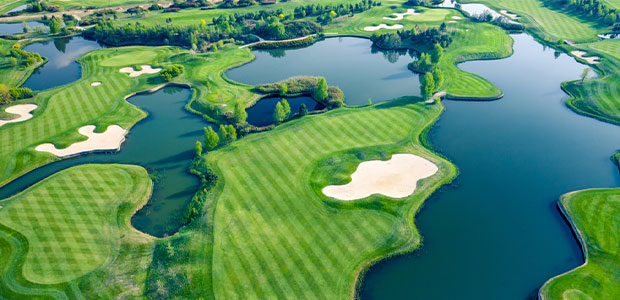
More Golf Courses Need to Use Recycled Water
- By Jane Marsh
- Jan 05, 2022
Millions of individuals lack access to clean drinking water around the world. As various industries continue exploiting the natural resource, the global dehydration rate will rise. A significant portion of water misuse comes from the landscaping sector.
The aesthetic demands from consumers push landscapers to use large quantities of water, developing plush, green lawns. Environmental changes also cause lawn care professionals to overuse water, depleting local supplies. Golf courses use excessive amounts of fresh water, and greenskeepers can source recycled water to increase their sustainability.
Golf Course Water Usage Challenges
In warm, dry climates, one golf course can use a million gallons of water each day. Researchers predict the necessary golf course water usage will increase as the global evaporation rate rises. As greenhouse gases invade the atmosphere, and earth’s temperature increases, the global water cycle changes.
While water displacement increases precipitation in some regions, it leaves others in extended drought periods. High evaporation rates create watering challenges for greenskeepers. Limited moisture retention in arid regions forces professionals to use more water, supporting a course’s maintenance needs.
The overuse of freshwater sources further displaces local supplies, leaving residents, farmers and manufacturers with little water for vital processes. Greenskeepers can decrease resource exploitation by engaging in water reuse.
Sourcing Irrigation from Waste
Nearly 13 percent of greenskeepers use reclaimed water to maintain golf courses. They access the irrigation supply from used water sources. When individuals shower, wash their clothes, flush their toilets and more, they produce wastewater.
Sanitation specialists process and purify wastewater at treatment plants, creating potable supplies. The process utilizes high quantities of energy, creating greenhouse gas emissions and other forms of pollution. Golf courses require gray water to meet their irrigation needs, and some maintenance professionals still use potable sources for watering.
Gray water is non-potable and partially filtered to remove impurities. It is unsuitable for human consumption and can effectively maintain greens. The water reclamation process also uses significantly less energy, reducing the enhanced greenhouse effect.
Desalination with Reverse Osmosis
One challenge golf course workers face when using recycled water is nutrient absorption restrictions. Wastewater contains higher sodium levels compared to potable sources. When salt accumulates in soil, the grass is unable to absorb phosphorus and potassium, restricting its growth process.
The nutrient restrictions also decrease a plant’s ability to intake water. Over time, dehydration destroys roots, turning patches of grass yellow and brown. Greenskeepers can filter salt out of recycled water by moving it through a reverse osmosis process.
Reverse osmosis processes water through a semipermeable membrane, removing dissolved solutes to create a desalinated output. Some treatment plants using the filtration practice use large amounts of energy, limiting their sustainability. Researchers discovered connecting a reverse osmosis system to solar panels can significantly reduce purification-related emissions.
Renewable Energy in Irrigation
Environmental engineers and scientists created a solar-powered* reverse osmosis system for arid locations. Many arid regions reside by saltwater sources, creating a potential supply solution. The technology uses non-thermal membrane separation processes, developing desalinated water without producing emissions.
Other environmentalists are developing a photovoltaic (PV) solar covering for canals to preserve freshwater sources. The technology shades the moving water supply, decreasing its susceptibility to evaporation. Researchers predict the devices could save nearly 63 billion gallons of fresh water annually.
Engineers also created floatovoltaic panels resting on top of other water sources to minimize evaporation interferences. Greenskeepers can improve the eco-friendliness of their golf course water usage when using water conservation technologies, preserving their supplies. They can also access clean energy by using solar devices, using electricity for other maintenance devices.
Additional Sustainability-Enhancing Maintenance Features
Golf course owners can increase their sustainability by using recycled water along with electric maintenance devices. They may trade outdated golf carts with solar-powered versions. The carts have PV panels on their roofs, producing clean electricity to power their batteries.
Greenskeepers can also use electric lawnmowers, weed whackers and other maintenance technologies to improve sustainability. Additionally, they may prevent the use of pesticides and synthetic fertilizers, protecting local water sources from eutrophication. Over time, the minimal maintenance transitions can effectively improve a golf course’s eco-friendliness
About the Author
Jane Marsh is an environmental writer. You can keep up with her work on her site Environment.co.